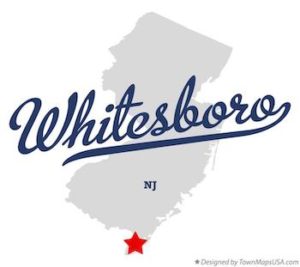
*Whitesboro, New Jersey, was founded on this date in 1901. It is one of many Black towns in America established after the American Civil War.
The Colored Equitable Industrial Association founded it. This financial group had Black investors, including Paul Laurence Dunbar, Booker T. Washington, and George Henry White, the leading investor and namesake. White was a Black attorney and the last former slave to serve in Congress. He was a Republican representing North Carolina's 2nd congressional district. White and his fellow entrepreneurs wanted to create a self-reliant community for Blacks without the discrimination faced in the southern states. Shares in the planned community were sold to Blacks from North and South Carolina and Virginia.
Four months after the purchase was finalized, in December 1901, advertisements began appearing in magazines such as Colored American for the sale of the lots. Prospective colonists had to be of good character and, in the spirit of Washington, needed to possess steady and industrious habits. Once approved, a colonist would receive several lots, every 50 feet by 150 feet (about a sixth of an acre), for a down payment of $5 per lot and a promise to till the land. The residents were not obligated to build a home or any other structure on their lot, but the land was suitable for growing farm produce and raising chickens, so building homes was encouraged.
Colonists had ten years to pay off the initial purchase price of fifty dollars and were charged an additional $2 to $5 a month, depending on their income. Relatively few of the first colonists were actually from New Jersey, as the Equitable Association had hoped; most were migrants from Virginia or North Carolina, where the name “George White” was familiar. In March of 1902, the town named itself “Whitesboro” after its most famous investor, George White, who, when his term ended in 1901, was the last Black Congressional representative until 1929.
In 2006, the Johnson Family Historical Trust discovered the value of its original deed to Whitesboro property from the George H. White Realty Company. It has been called one of "America's Untold Treasures" by Black appraiser Phillip Merrill. The Johnson Family Historical Trust holds rare items important to Whitesboro, such as a 1936 artifact formerly owned by James L. Johnson, a nationally recognized ham radio operator. His radios are of interest to Whitesboro and national history in technology. There are more than 50 known and appraised artifacts from the original investors of the town that are planned to be featured in Whitesboro in the coming few years. This summer, a dig for national history will take place to uncover more artifacts at various historical sites in Whitesboro, hosted by the Johnson Family Historical Trust.
The 2010 United States Census counted 2,205 people, 870 households, and 571.590 families in the CDP. The population density was 610.2 per square mile (235.6/km2). There were 1,072 housing units at an average density of 296.6 per square mile (114.5/km2). The racial makeup was 53.02% (1,169) white, 37.05% (817) Black or African American, 0.45% (10) Native American, 1.13% (25) Asian, 0.00% (0) Pacific Islander, 3.13% (69) from other races, and 5.22% (115) from two or more races. Hispanic or Latino of any race were 8.75% (193) of the population. Of the 870 households, 23.2% had children under 18; 42.0% were married couples living together; 18.3% had a female householder with no husband present, and 34.3% were non-families.
Of all households, 30.2% were made up of individuals, and 17.9% had someone living alone who was 65 years of age or older. The average household size was 2.5,3 and the average family size was 3.15. 24.2% of the population were under 18, 8.3% from 18 to 24, 21.9% from 25 to 44, 24.3% from 45 to 64, and 21.3% who were 65 years of age or older. The median age was 41.5 years. For every 100 females, the population had 89.9 males. For every 100 females ages 18 and older, there were 84.8 males.